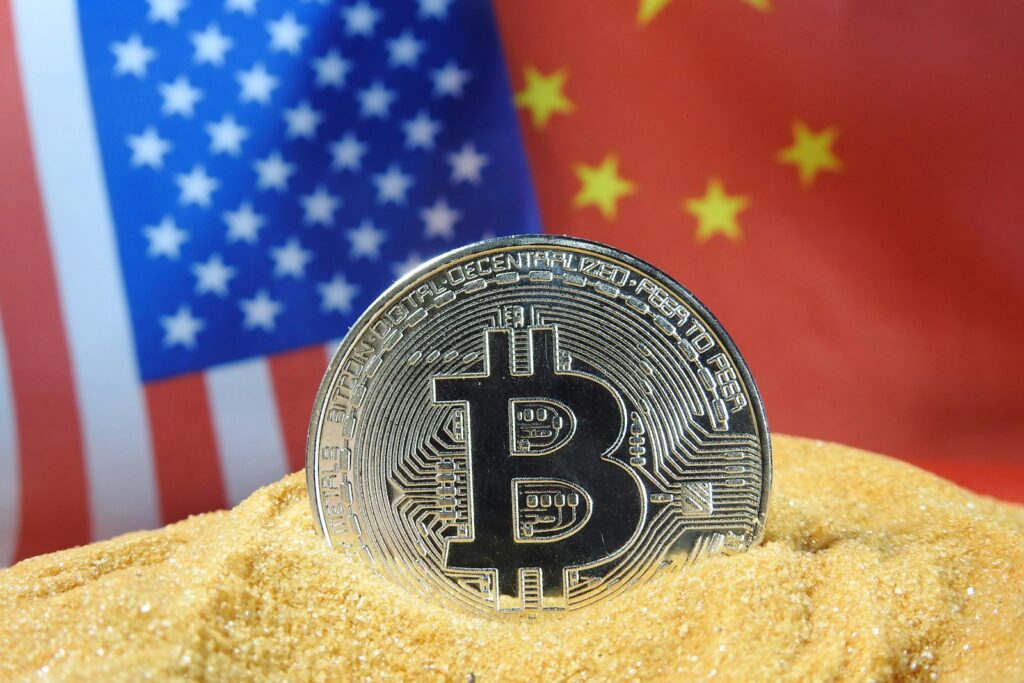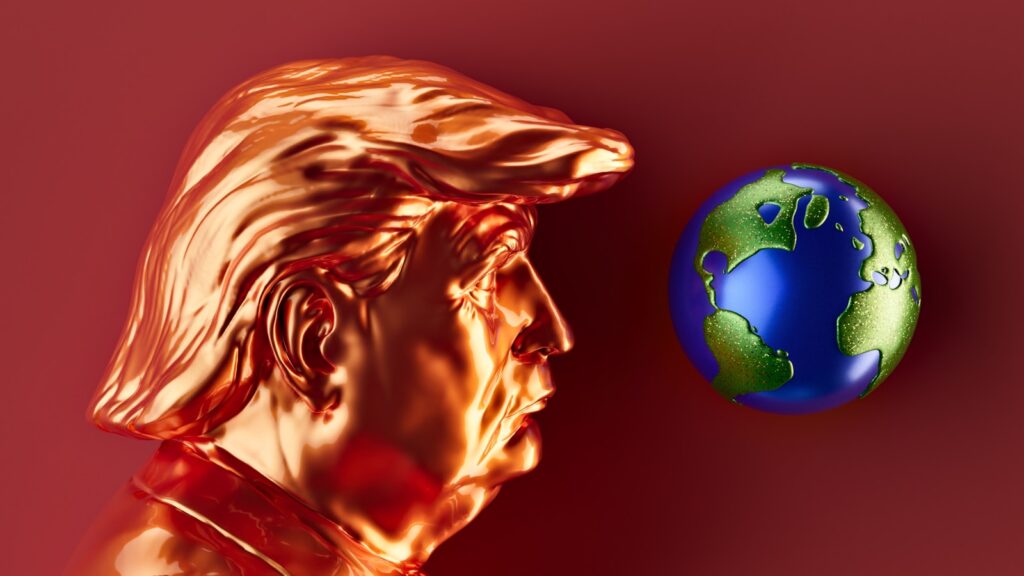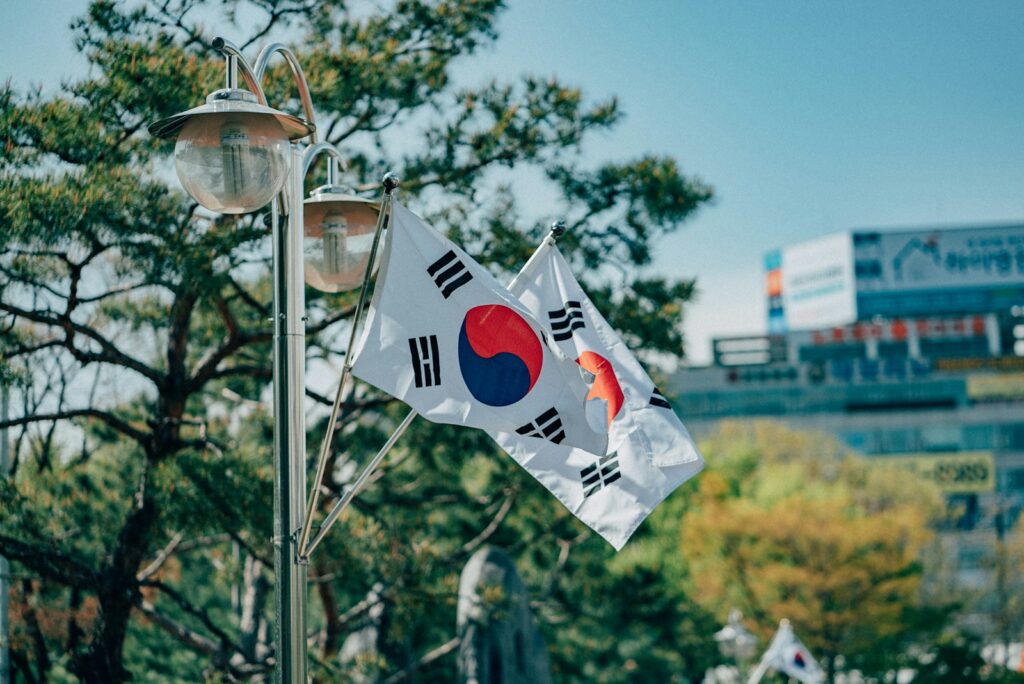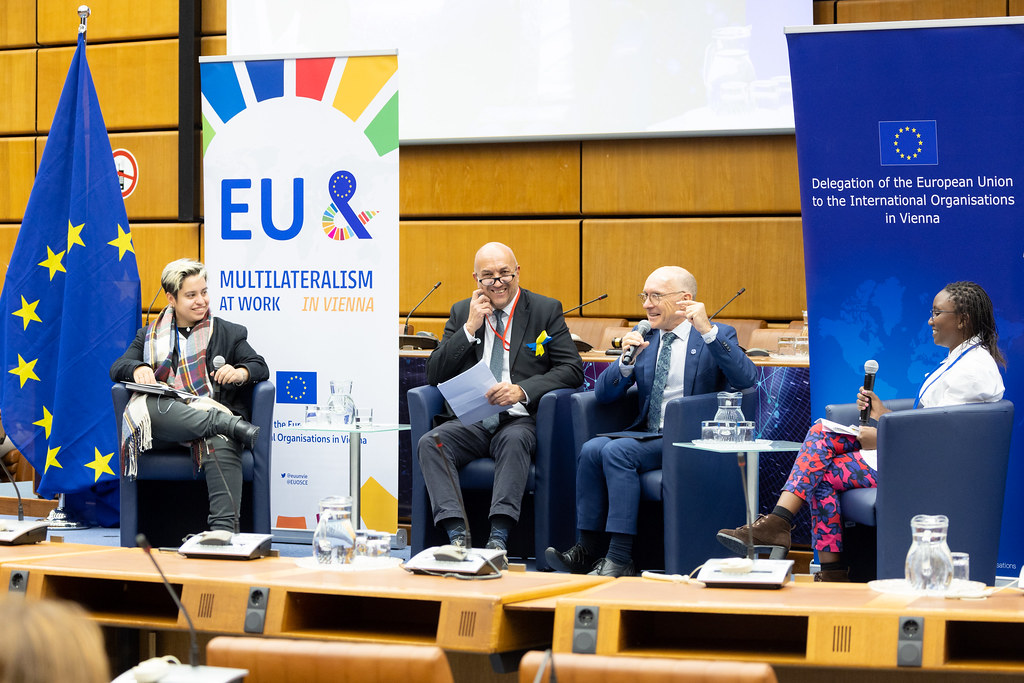
The rapid onset of the second Donald Trump administration has placed South Korea, a critical U.S. ally, on high alert. Traditional diplomatic norms, where Seoul’s president would typically be among the first to engage, were disrupted by domestic political turmoil, including President Yoon Suk Yeol’s martial law declaration and subsequent impeachment. This unforeseen pause, however, afforded South Korea a valuable opportunity to observe initial interactions between the Trump administration and other global leaders, extracting vital lessons for future engagement.
This new phase, Trump 2.0, differs significantly from the first term, often perceived as chaotic. The current administration has demonstrated greater intentionality, deliberation, and discipline. President Trump also claims a renewed domestic mandate and views the global order as more fragile. These conditions amplify the stakes surrounding core issues in the U.S.-South Korea relationship, particularly the “three T’s”: tariffs, transactionalism, and Trump-centrism, demanding astute management from Seoul.
Managing this relationship will likely be the most consequential and vexing task for South Korea’s national leadership once stability returns. The challenges span economic vulnerabilities, security assurances, and global order. Understanding these evolving dynamics and formulating coherent, adaptive strategies is paramount for South Korea to protect its interests, ensure regional stability, and navigate an “America-first” presidency proving more resolute. The following insights represent critical considerations for Seoul in this high-stakes environment.

1. **The Resurgence of Tariffs and “Fair Trade”** Donald Trump’s return firmly re-established tariffs as a cornerstone of his economic policy. His “tariff man” persona, alongside early sectoral tariffs on Mexico, Canada, and China, signals a clear departure from free trade principles, favoring “fair trade” and reciprocity. This paradigm shift necessitates a fundamental re-evaluation of trade strategies by U.S. allies, including South Korea, which relies heavily on exports.
For South Korea, this renewed focus on fair trade is already influencing bilateral relations. Seoul has responded proactively, expressing willingness to invest in and purchase U.S. oil and liquefied natural gas (LNG). Such commitments are strategic gestures aimed at demonstrating reciprocity and addressing Trump’s concerns about trade imbalances. This approach underscores South Korea’s recognition that economic engagement must align with the Trump administration’s specific priorities.
Furthermore, South Korea has initiated efforts to establish channels for negotiating exceptions to potential sectoral and national tariffs. This diplomatic maneuvering highlights the necessity for tailored solutions to mitigate economic impacts on its vital automobile and technology industries. The challenge for Seoul is to strike a delicate balance: satisfying Trump’s demands for “fairness” while safeguarding its long-term economic interests through sophisticated diplomacy.

2. **Navigating Transactional Diplomacy** A defining characteristic of engaging with President Trump is his unwavering transactionalism, a style that contrasts sharply with allies accustomed to shared values for joint action. This fundamentally different diplomatic philosophy demands significant adaptation. While South Koreans encountered this during first-term burden-sharing discussions, its pervasive nature remains a source of diplomatic friction.
One viable strategy involves shaping deal-making processes to one’s advantage while allowing Trump to declare a public victory. This delicate approach requires understanding Trump’s motivations and framing outcomes in terms that resonate with his narrative of success. It means identifying tangible benefits South Korea can offer that appeal directly to the U.S. administration’s immediate goals, creating a mutually beneficial, albeit carefully managed, scenario.
However, this strategy demands continuous effort to ensure that Trump’s alternatives to alliance-based cooperation remain politically and monetarily costly. South Korea must consistently reinforce the inherent value of its existing alliance, making it a more attractive and less burdensome option than potential unilateral arrangements. This involves pragmatically highlighting the strategic costs of disengagement and financial burdens of maintaining security without robust allied support.
Read more about: Maurice Tempelsman: A Diamond Magnate’s Enduring Influence, From Global Commerce to Jacqueline Kennedy Onassis’s Side

3. **Adapting to a Trump-Centric Global Order** The second Trump administration’s explicit ambition to redefine the global order in “Trump-centric” terms presents a profound challenge to established international norms. This introduces new unpredictability and risk for middle powers. An alternative, equally unsettling possibility is a global order divided into spheres of influence, regulated by leaders like Trump, Putin, and Xi. Such a framework inherently disadvantages middle powers by marginalizing their interests.
For countries like South Korea, situated on geopolitical fault lines, this approach is particularly concerning. Their security and economic well-being could easily become bargaining chips in major power negotiations. Traditional assurances of international law and collective security might diminish, leaving nations like South Korea more exposed to regional pressures and less confident in broad international support, necessitating a re-evaluation of their geopolitical standing.
South Korea must therefore adapt its foreign policy to this shifting paradigm, recognizing the strain on the traditional global framework. This means actively advocating for its interests within a more competitive and fragmented international system. It also requires working to preserve elements of multilateralism that benefit its security and prosperity, even as major powers pursue their often divergent, self-interested agendas.

4. **The Threat of a Trump-Kim Deal and Alliance Reordering** Among the most significant challenges for South Korean leadership is managing the implications of President Trump’s direct summitry with North Korean leader Kim Jong Un. These interactions carry the possibility of deal-making that could fundamentally reorder the U.S.-South Korea defense relationship. The prospect of a “peaceful Trump-Kim relationship,” particularly if it comes at the expense of traditional alliance structures, raises deep concerns in Seoul.
Such a scenario could see the U.S. prioritize a bilateral understanding with North Korea, potentially sidelining South Korea’s role or altering the nature of the U.S. troop presence and commitments. While easing tensions with the North is desirable, the trade-offs might include a diminished U.S. security umbrella, increased defense burdens for South Korea, or a strategic shift for U.S. Forces Korea, leaving Seoul with higher costs and risks.
South Korean policymakers must carefully consider the ramifications of any U.S.-North Korea agreement, ensuring it does not compromise deterrence or readiness. This requires continuous, robust dialogue with Washington, emphasizing the alliance’s foundational importance for regional stability, not just Korean Peninsula security. Seoul must proactively shape the narrative and terms of engagement, positioning itself as an indispensable partner in any peace process.

5. **Managing the U.S.-China “Whiplash”** South Korean policymakers also face the challenge of managing potential “whiplash” from the Trump administration’s complex approach to China. While the administration largely views China as an adversary, pushing allies to align, President Trump simultaneously regards Xi Jinping as a potential negotiating partner. This duality creates significant uncertainty for Seoul, which must navigate alignment with the U.S. while avoiding unnecessary provocation of its largest trading partner.
The “whiplash” stems from the potential for sudden shifts in U.S. policy toward China, compelling South Korea to rapidly adjust its diplomatic and economic strategies. As a nation deeply integrated into global supply chains and heavily reliant on Chinese trade, a clear and consistent U.S. strategy is preferable. China’s critical role in North Korean affairs further complicates Seoul’s delicate balancing act between its two most powerful partners.
Therefore, South Korea needs a clear stance on regional security: supporting U.S. stability efforts and opposing status quo changes, but without explicitly naming China as an adversary. This nuanced approach seeks to reassure Washington of its alliance commitment while prudently managing indispensable economic ties with Beijing. It is a strategic tightrope walk, balancing security imperatives with economic realities in a volatile geopolitical landscape.

6. **Leveraging South Korean Assets and Technology** Despite significant challenges, South Korea possesses valuable assets and advanced technologies that offer leverage in managing its relationship with the Trump administration. The United States’ need for these capabilities provides Seoul with incentives to make Trump’s tariffs and transactionalism more manageable. This strategic advantage allows South Korea to approach negotiations from a position of strength, offering valuable contributions for favorable treatment.
For example, discussions around South Korea’s $350 million investment fund for U.S. industries, particularly in shipbuilding—a sector Trump has highlighted—demonstrate this leverage. Such investments are not just financial transactions but strategic gestures, underscoring mutual benefits and helping bridge trade gaps. They transform potential vulnerabilities into opportunities for constructive engagement that align with U.S. presidential priorities.
Beyond direct investments, South Korea’s advanced manufacturing, technological leadership, and economic dynamism represent powerful incentives. Its ability to contribute to U.S. economic growth and technological superiority can be strategically offered in broader trade and security discussions. By deploying these strengths, South Korea can proactively shape engagement terms, proving itself an indispensable partner and crucial contributor to U.S. prosperity, strengthening its diplomatic hand.
Read more about: The Dragon’s Ascent: Unpacking China’s Modern Military and Expanding Global Reach by 2025

7. **The Magnified Geopolitical Risk and Doubts on Security Pledges** The ambition for a Trump-centric global order, combined with the administration’s transactional nature, significantly heightens geopolitical risk for South Korea. This paradigm shift casts unsettling doubt on traditional assurances of U.S. security pledges, which form the bedrock of the alliance. For a nation situated on a geopolitical fault line with a nuclear-armed neighbor, any perceived weakening of these guarantees is a profound national security concern.
The established framework of collective security, built on decades of trust, faces potential erosion under an “America-first” doctrine. This uncertainty compels South Korea to re-evaluate its long-term defense strategy, possibly increasing self-reliance and diversifying diplomatic engagement with regional powers, even as it seeks to uphold the U.S. alliance. The credibility of the U.S. commitment to its allies becomes a central, critical question.
Furthermore, growing cooperation between North Korea and Russia, both nuclear-armed adversaries, exacerbates concerns about a U.S. retreat in leadership and security commitments. Their partnership in the Ukraine war and efforts to evade sanctions complicate future denuclearization efforts. This confluence of factors creates an environment where geopolitical risks are tangibly heightened, demanding astute leadership and adaptive policy to navigate a more precarious regional and global landscape.

8. **The Urgency of Domestic Democratic Defense: The Yoon Impeachment Lesson**South Korea’s swift and decisive response to former President Yoon Suk Yeol’s martial law declaration in December offered a powerful lesson in democratic resilience and immediate accountability. Within hours, lawmakers and protesters gathered at the National Assembly, overturning the decree unanimously. This rapid repudiation of a presidential power grab demonstrated a profound appreciation for democratic institutions, a stark contrast to the delays observed in other nations facing similar challenges to their political systems.
This episode provided a crucial template for dealing with would-be authoritarians, emphasizing that swift and unified action is paramount. The ability of South Korea’s Democratic-led opposition to act within six hours to block the demise of their democracy underscores the critical importance of a desperately needed sense of urgency when fundamental democratic principles are under attack. Such rapid responses prevent consolidation of power and allow for the immediate reassertion of constitutional order, thereby safeguarding national stability.
Political observers noted eerie parallels between the South Korean crisis and the aftermath of the January 6, 2021, events in the United States. The comparison highlighted how delays in response can allow political defenses to consolidate and opportunities for accountability to diminish. For South Korea, with living memory of military dictatorships, the resolute rejection of attacks on its democratic system speaks to a deeply ingrained understanding that democracy is indeed a fragile thing, requiring constant vigilance and immediate defense.

9. **Cultivating Regional Solidarity: The Japan-South Korea Rapprochement**The pressures emanating from the Trump administration have inadvertently fostered a rare diplomatic rapprochement between South Korea and Japan, two historical adversaries. President Lee Jae Myung’s back-to-back summits with Prime Minister Shigeru Ishiba of Japan and President Trump underscored a shared necessity for Asian allies to coordinate their strategies in navigating an “America-first” presidency. This unprecedented level of consultation signifies a recognition that a united front offers greater leverage in dealing with Washington’s transactional demands.
This newfound solidarity is largely driven by the ‘Trump risk,’ particularly the uncertainties it introduces into the business sector. Both Seoul and Tokyo recognize the need to ease this uncertainty through coordinated efforts, not necessarily to confront Trump, but to operate within a framework of trilateral cooperation. Such collaboration is viewed positively in Washington, which has long been frustrated by its allies’ persistent disputes hindering three-way security collaborations, especially concerning China.
Indeed, both countries share crucial interests in the face of Trump’s efforts to reset global trade and U.S. security commitments. They are under pressure to increase defense spending and contribute more to hosting American troops. Their vital automobile and technology industries remain vulnerable to Trump’s tariff hikes, and they navigate a tricky balance between the U.S. and China. This confluence of challenges compels them to set aside minor differences and cooperate on larger, shared objectives, including proposing trilateral schemes for energy investments that align with Trump’s priorities.

10. **The Art of Conciliatory Diplomacy: Lee Jae Myung’s Approach to Trump**South Korean President Lee Jae Myung’s first meeting with President Trump served as a masterclass in nuanced diplomatic tactics, demonstrating how world leaders are adapting to Trump’s unique style. Despite Trump’s earlier social media threats regarding a “Purge or Revolution” in South Korea, President Lee adopted a strategy of praise and adulation rather than confrontation. This approach effectively defused initial tensions and set a cordial tone for the high-stakes discussions, emphasizing a desire for favorable trade terms and continued military aid.
Lee’s opening remarks, which commended Trump’s redecoration of the Oval Office as “very bright and beautiful” and embodying “the dignity of America,” were a calculated diplomatic maneuver. He strategically flattered Trump by noting the Dow Jones index’s record highs and even suggested a “Trump Tower in North Korea,” coupling it with a request for Trump’s continued help with Korean peace efforts. This demonstrated an understanding of Trump’s personal motivations and a willingness to frame bilateral issues in terms that appealed to his narrative of success and desire for a Nobel Peace Prize.
This approach also involved aligning with Trump’s assertions, such as agreeing that North Korean leader Kim Jong Un would not have advanced his nuclear capabilities had Trump remained in office. By acknowledging a “renaissance” and attributing such accomplishments solely to Trump, Lee effectively transformed a potentially hostile encounter into a “very good conversation” that exceeded expectations and went longer than scheduled. This highlights a critical lesson: successful engagement with the Trump administration often involves shaping the narrative to allow Trump to declare a public victory, thereby facilitating progress on national interests.

11. **Strategic Economic Engagement: Investments and Trade Concessions**South Korea has demonstrated a proactive and strategic approach to economic engagement, offering significant investments and trade concessions to manage the Trump administration’s “America-first” agenda. A July deal saw Seoul pledging hundreds of billions of dollars in U.S. investments, a direct response to Trump’s threats of high tariffs. This agreement ultimately set tariffs on South Korean goods at 15%, a reduction from the 25% that Trump had initially threatened, illustrating the effectiveness of such preemptive economic diplomacy.
These investments are not merely financial transactions but strategic gestures aimed at demonstrating reciprocity and addressing Trump’s concerns about trade imbalances. For instance, discussions around South Korea’s $350 million investment fund for U.S. industries, particularly in shipbuilding—a sector Trump has specifically highlighted—underscore how Seoul leverages its economic strengths. These contributions transform potential vulnerabilities, like a large trade surplus with the U.S., into opportunities for constructive engagement that align with U.S. presidential priorities.
Furthermore, South Korea has expressed a willingness to invest in and purchase U.S. oil and liquefied natural gas (LNG), signaling its recognition that economic engagement must align with the Trump administration’s specific priorities for energy production and exports. These commitments, alongside early efforts to negotiate exceptions to sectoral and national tariffs, highlight a sophisticated diplomatic strategy aimed at safeguarding vital automobile and technology industries while demonstrating South Korea’s indispensable contribution to U.S. economic growth and technological superiority.

12. **Redefining Alliance Burden-Sharing: Increased Defense Spending and USFK Flexibility**The Trump administration has consistently pressed South Korea to redefine its contributions to the U.S.-South Korea military alliance, pushing for both increased financial burden-sharing and greater flexibility for U.S. Forces Korea (USFK). In response, President Lee Jae Myung affirmed South Korea’s commitment to raising its defense budget, stating that these funds would be used to transform the Korean military into a “smart military that will prevail in future.” This pledge signals Seoul’s proactive stance in meeting perceived U.S. demands for greater self-reliance and modernized capabilities.
Discussions during the summit also touched upon the U.S. desire for Seoul to accept greater flexibility in deploying American troops for missions beyond the Korean Peninsula. This demand, intensified under Trump, reflects a broader U.S. military focus on capabilities to respond to potential conflicts with China over Taiwan. Such a shift could reshape the role and size of USFK, requiring South Korea to shoulder a greater burden against North Korea while the U.S. redirects its focus to wider Indo-Pacific security challenges.
To manage these evolving expectations, South Korea aims to balance increased contributions with assurances for continued deterrence. While potentially accepting a more flexible role for USFK, Seoul simultaneously seeks U.S. commitments to ensure that deterrence and readiness against North Korea remain uncompromised. This includes advocating for offsetting American troop deployments off the peninsula with increased airpower or the arrival of strategic assets, such as bombers, to prevent any miscalculation by North Korea and maintain regional stability.

13. **Navigating Geopolitical Fault Lines: The Taiwan Strait Dilemma**South Korea faces a complex challenge in navigating the heightened geopolitical risks associated with the U.S.-China rivalry, particularly concerning the Taiwan Strait. While the Trump administration often views China as an adversary, President Trump also sees Xi Jinping as a potential negotiating partner. This duality creates uncertainty for Seoul, which must align with U.S. security efforts while avoiding unnecessary provocation of China, its largest trading partner and a crucial player in North Korean affairs.
U.S. officials have expressed a desire for more explicit South Korean commitments on its approach to China, and there are concerns among South Korean lawmakers that Washington could demand intervention if a conflict erupts in the Taiwan Strait. This prospect poses a tricky dilemma for Seoul, given its deep economic reliance on Beijing and China’s indispensable role in managing North Korea. A clear and consistent U.S. strategy towards China is preferable for South Korea, whose position is sensitive and pivotal.
Therefore, South Korea needs to articulate a nuanced stance on regional security. This involves supporting U.S. efforts to maintain Indo-Pacific stability and opposing changes to the status quo, but without explicitly naming China as an adversary. This delicate balancing act seeks to reassure Washington of alliance commitments while prudently managing essential economic ties with Beijing. It is a strategic tightrope walk designed to protect national interests in a volatile geopolitical landscape where U.S.-China tensions are a central feature.

14. **Protecting Sovereignty: The Osan Air Base Challenge**The Trump administration’s demand for U.S. ownership of Osan Air Base represents a direct challenge to South Korean sovereignty and a significant issue for future bilateral negotiations. President Trump expressed a desire to scrap the existing U.S. lease with South Korea and instead acquire outright ownership of the land. This proposition moves beyond traditional burden-sharing discussions to a fundamental redefinition of military base agreements, raising profound questions about national control and autonomy.
Such a demand could be viewed within the broader context of Trump’s transactional approach, where U.S. security commitments are increasingly tied to tangible assets and financial contributions. For South Korea, the Osan Air Base is not merely a military installation but a symbol of the enduring alliance and a critical component of its defense infrastructure. Any alteration to its ownership or operational status would have significant political and strategic implications, potentially setting a precedent for other U.S. military presences globally.
South Korea must approach this issue with careful deliberation, ensuring that any resolution safeguards its national interests and sovereignty while maintaining the strength of the alliance. The recent raid by South Korean investigators on areas of Osan Air Base controlled by Seoul, though strictly limited and not involving U.S. military operations, underscores the sensitive nature of shared facilities. Navigating this demand will require astute diplomacy, aiming to preserve alliance effectiveness without compromising national control over strategic territory.
South Korea’s experiences under the early months of the second Trump administration have thus provided invaluable lessons, shaping a comprehensive strategy for navigating an increasingly complex global order. From the immediate defense of democratic institutions at home to the strategic cultivation of regional alliances, and from nuanced diplomatic engagement to calculated economic concessions, Seoul is demonstrating a robust capacity for adaptation. These lessons underscore the necessity for agile, pragmatic, and multi-faceted approaches in an era where traditional diplomatic norms are continuously challenged, ensuring national interests are safeguarded amidst global realignments and a resolute ‘America-first’ policy.



